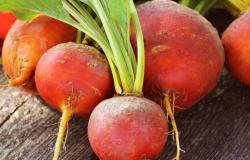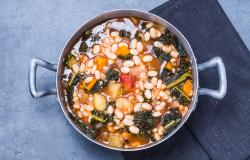Pappa al Pomodoro—Tuscan Tomato-Bread Soup

Pappa, which in Italian means pap is, as the name suggests, a soft mushy comfort food. Fighting food waste is a hot-button topic right now, but the Italians have been doing it for centuries. Their saltless bread was for centuries a staple in Tuscany, baked once a week and eaten with virtually every meal. Not a crumb was wasted and the end of the week stale bread became the inspiration for several now classic Tuscan dishes like Panzanella, bread salad, and ribollita, bean, veggie and soup.
Pappa al pomodoro---a piatto povero, “poor-man’s dish,” is another such creation by Tuscan farmers to make use of stale bread and bumper crops of tomatoes, a New World food introduced into Italy in the 16thc. The dish gained fame, not just in Tuscany, but throughout Italy when it was featured in an early 1900s Italian novel about a rebellious Tuscan pre-teen, Il Giornalino di Gian Burrasca, written by Vamba (aka Luigi Bertelli) that went on to become a popular tv series in the ‘60s with a hit song “Pappa al Pomodoro” sung by the show’s lead Rita Pavone, an international celebrity who sang with Diana Ross and appeared numerous time on the Ed Sullivan Show. The song was released as a single in 1965 and became an Italian hit.
Made with canned tomatoes this dish can be served warm in winter, but it really shines, eaten chilled or at room temperature, prepared with summer-sweet vine-ripened fresh tomatoes. No matter when you make it, be sure to use quality bread made with natural yeast that’s allowed to slow rise. This isn’t the dish for supermarket white bread. Although it’s delicious served plain, the burrata, with its creamy center, adds a rich lushness to this rustic dish. A drizzle of balsamic vinegar adds depth of flavour with a delightful acidic brightness. Aceto Balsamico di Modena, a dense condiment made from the boiled-down grape must that is aged in wooden barrels for a minimum of 60 days.
The resulting deeply flavourful, naturally sweet vinegar is a vastly different product from the poor imitation industrially produced “balsamic” vinegar that have become so ubiquitous. The real Aceto Balsamico di Modena can only be produced in the Emilia-Romagna provinces of Modean and Reggio Emilio, whose microclimate help produce the vinegar’s unique flavour, received special European Union protected PGI (protected geographical indication) status which you’ll see noted on each bottle.
Serves 4
Blanch the tomatoes in boiling water for 10 minutes. Drain, peel, cut in half and remove the seeds. Finely chop the pulp.
Heat the garlic in oil in a medium saucepan until fragrant, about 1 minute, add the tomato pulp and cook for about 15 minutes. Add the bread and continue cooking, stirring frequently, adding warm stock, a little at a time, until it reaches a soft texture, about 15 minutes. Tear half the basil in small pieces and stir into the mixture. Julienne cut the remaining basil leaves. Season to taste with salt and pepper.
Let cool to room temperature, divide between 4 bowls and serve with half a ball each of burrata cheese, a drizzle of olive oil and Aceto Balsamico di Modena. Garnish with the remaining basil.
Recipe and photos courtesy of Consortium for Aceto Balsamico di Modena.





